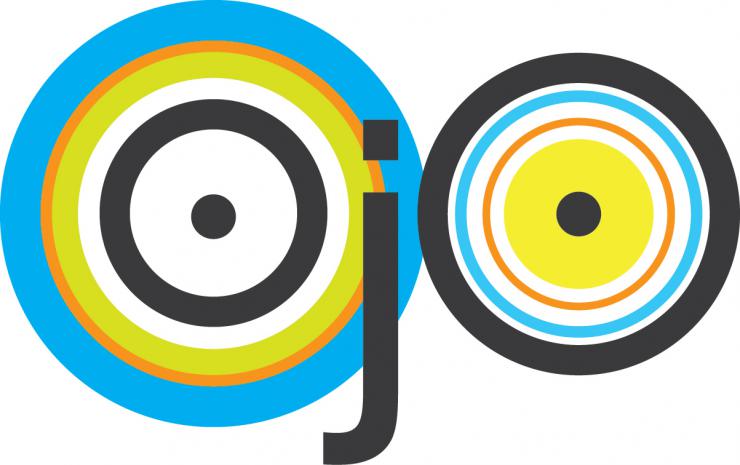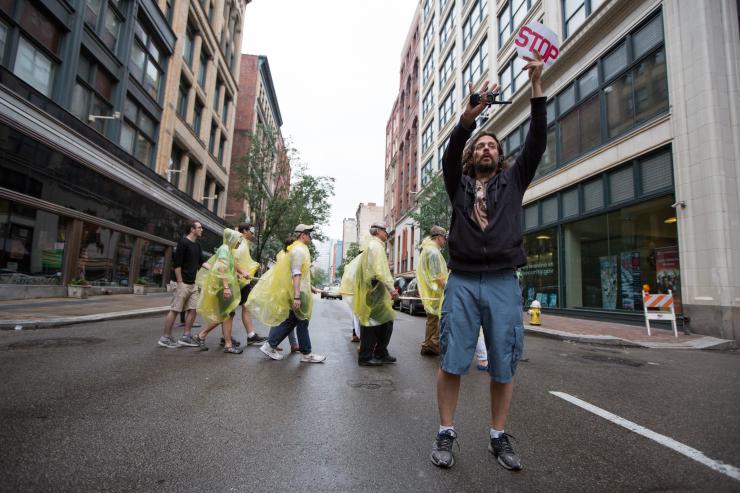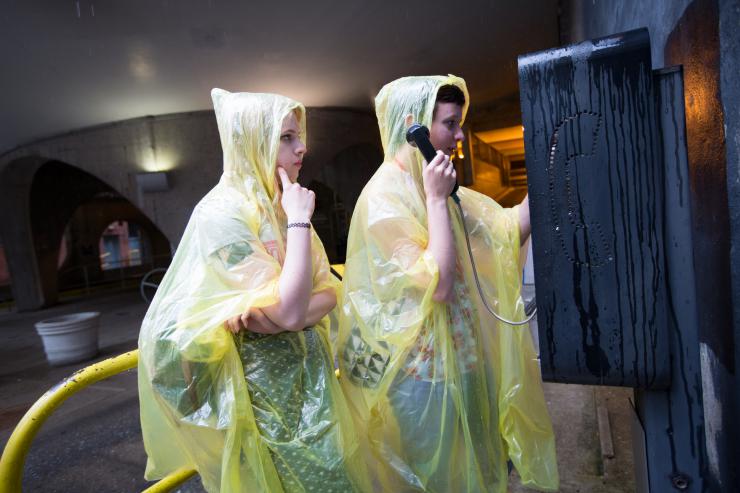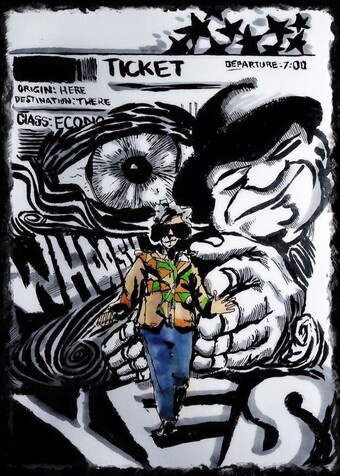The Blind Leading the Blind
The OjO Experience in Pittsburgh
OjO was mounted in Pittsburgh in 2014, then again at La Jolla Playhouse’s Without Walls Festival last month. This blog is the introductory entry in a series elucidating the process from the creative team’s perspective, beginning with our initial iteration in Pittsburgh to our sold out run at the Festival in La Jolla last month.
In 2014, I was awarded a residency grant made possible by the Pittsburgh Foundation's Investing in Professional Artists initiative to create OjO: The Next Generation of Travel, a world-premiere immersive theatre event for the Pittsburgh Cultural Trust’s Three Rivers Arts Festival.
The rest of the project’s creative team included Bricolage Producing Artistic Director Tami Dixon, lead writer Gab Cody, theatre and film director Sam Turich, and collaborative Production Manager Hannah Nielsen-Jones. OjO, which means “eye” and/or “look!” in Spanish, was also a collaboration with members of the local blind community, including Ann Lapidus and Joyce Driben.
The event was staged at multiple, interlocking exterior, and interior locations across downtown Pittsburgh. Participants experienced a ninety-minute perspective-altering, urban adventure that explored the streets of downtown and then, transported them into the world of the blind.

OjO first evolved around questions surrounding the Three Rivers Arts Festival itself, which is chiefly a showcase for visual artists. Before we even knew what the piece was, questions arose like how would the piece interact with the festival format? How might we utilize the cityscape and vast layout of the festival footprint? Should the experience be integrated into this framework, or should it stand alone? The artistic questions driving this type of work are not unlike those driving conventional modes of theatre, but the creation of “immersive work” that seeks to place the audience at the center of the experience often requires a completely different creation process.
A primary question to answer in this work is who is the audience? For the audience to take ownership of their experience, they must understand who they are in any given situation within the piece, and know intuitively how to respond. This requires thoughtful testing, and trial and error. In traditional studio practice, the actors and directors rehearse for several weeks before inviting an audience. The nature of audience-centered work, however, often requires the audience to be present from the first rehearsal.
What is place if we cannot see our surroundings? Does it matter where we are? If we cannot see our environment, what is our environment?
To assess audience involvement within these festival conditions, we built into the residency a series of “beta” tests to coincide with the Cultural Trust’s quarterly gallery crawls, in which potential participants gathered and walked the streets. By observing the conventions of art viewing in this context, we began to gain insight on the ultimate direction the piece would take. The first of these tests was the Cultural Trust’s First Night celebration event for New Year’s Eve—a sprawling occasion featuring visual and performing artists in about fifty venues across downtown. For this initial experience, we built a personal journey that utilized clues and led First Night participants to intimate encounters with various works of art within four local galleries and a bookstore downtown.

Although participants seemed to enjoy this experience, the team was frustrated during our post-mortem evaluation. We were frankly underwhelmed by the sequestration of art within the gallery experience. We observed how it often distanced the viewer from a visceral understanding of the artist’s intent, providing only a cursory opportunity to participate in the work, especially when viewed in a crowded gallery, from a moving vehicle, or through thick glass. We also felt personally distanced and limited by the specific artwork on the walls.
OjO activates the senses and the imagination of its participants by casting them as world travelers in search of exotic locations. These “locations” are in the mind’s eye of the traveler, traversing the terrain of memory, assumption, prejudice, and privilege.
We noted that the notion of “Art Tourism” linked the consumption of Art to the act of sightseeing. And we noticed for the first time how dependent Art is on the faculty of sight. Our team quickly decided to shift the focus for the experience from the art on the walls, to one rooted in the nature of the artistic process. For example, how could we create an experience for an audience capturing the vulnerability of the artist facing a blank canvas? What would happen if we removed their sense of sight altogether? There was real synergy between this idea of sight deprivation and the image of the artist entering the deep dark unknown, hoping to emerge with something new.
This was the point the team decided we must seek out members from Pittsburgh’s community of the blind to collaborate directly on OjO. To ground the experience and avoid the notion of the audience “playing blind,” the company began logging hours of interviews with two local women, each possessing wholly different perspectives. Ann is younger and lost her sight at age 24, while Joyce is older and has been blind since birth— she is from a generation that didn't openly discuss disabilities. Their different experiences drove our subsequent “beta” tests in OjO's creation. It soon became clear both women should perform within this immersive piece. Their telling of their own stories became the core of the experience. To complete the journey, audience participants became entirely reliant on these “guides” without sight. It was literally the blind leading the blind.
The ultimate framework for OjO is a journey curated by a next-generation travel agency. OjO activates the senses and the imagination of its participants by casting them as world travelers in search of exotic locations. These “locations” are in the mind’s eye of the traveler, traversing the terrain of memory, assumption, prejudice, and privilege. In this way, participants are co-creators of the piece and so much is dependent on their own imagination. OjO asks questions like:
“What is place if we cannot see our surroundings? Does it matter where we are? If we cannot see our environment, what is our environment? Is our place in the world determined by the people around us? How do we hold on to those we love when we cannot see them? How do we hold on to memory of those who have left us when our sight is removed?”
OjO fosters an empathic state so that participants’ experience of blindness within the event changes the way they perceive art, the world and their connection to others. By removing the faculty of sight, we reveal new ways of seeing.








Comments
The article is just the start of the conversation—we want to know what you think about this subject, too! HowlRound is a space for knowledge-sharing, and we welcome spirited, thoughtful, and on-topic dialogue. Find our full comments policy here